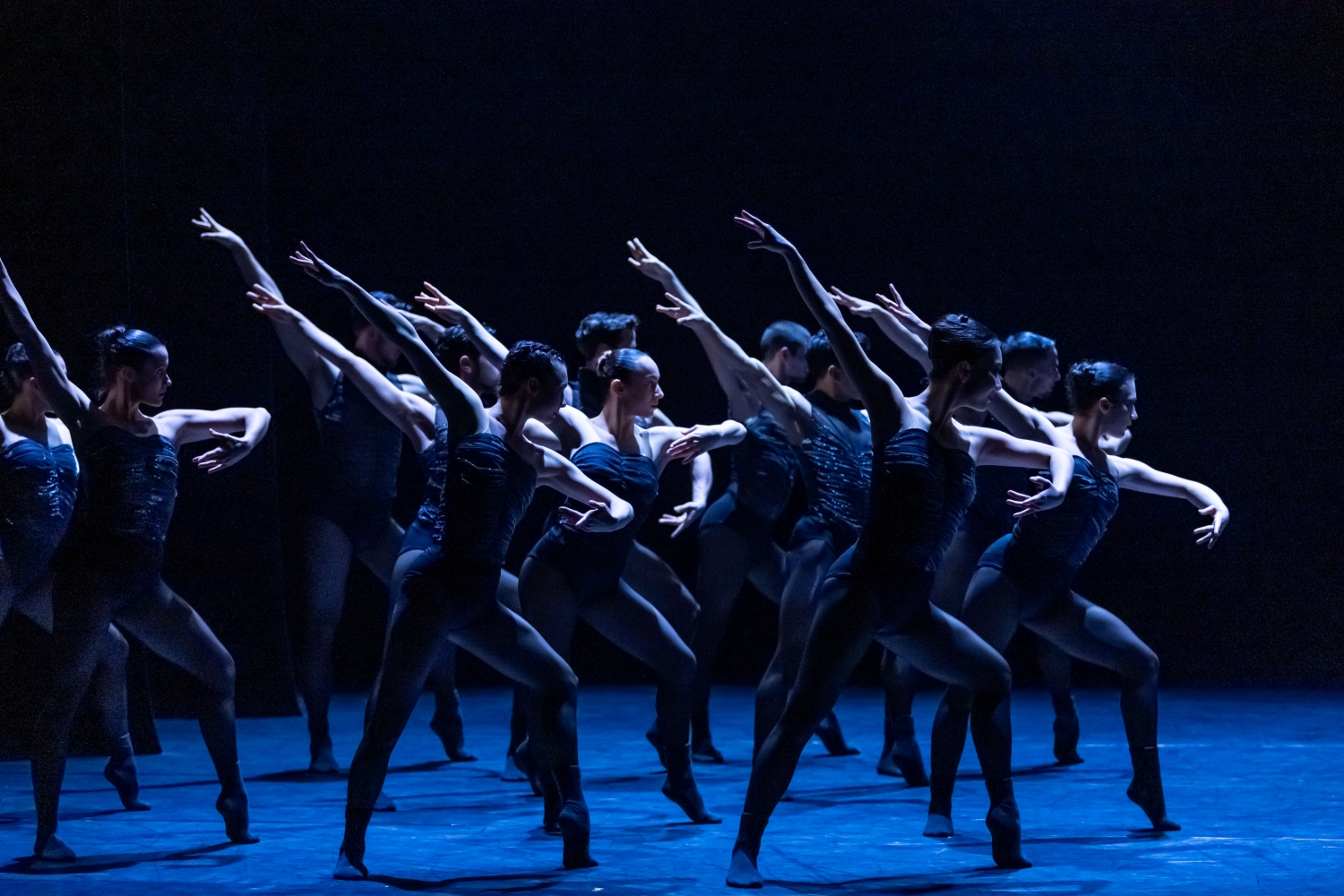Kamea Dance Company: A Choreography That Embraces and Defies Convention at Once
The new evening by Kamea Dance Company features works by two leading choreographers in their field. In Kosmos, the restlessness borders on discomfort; in Omniforge, the sensual movement draws out the best in the dancers.
The new program by Kamea Dance Company, under the artistic direction of Tamir Ginz, presents two works positioned at the intersection of classical ballet and contemporary dance. Both are signed by leading choreographers in this genre: Jacopo Godani (Italy) and Andonis Foniadakis (Greece–France). The abstract, non-narrative choreography in these works is expressed in distinct aesthetic forms-urgent, jittery, and tight in one, expansive and breath-filled in the other.
Kosmos by Foniadakis was originally created in 2014 for Ballets Jazz Montréal and has since been re-staged by Ballet Hannover and the National Theatre Mannheim. It’s a frenetic piece, almost entirely composed of entrances and exits by the dancers in a relentless, obsessive stream of hurried motion. The dancers run, leap, sweat, and constantly replace one another in an ongoing sequence of duets. The choreography is restless and unsettling – everything feels rushed, as though there’s no time to waste moving from one level to the next. Arms flail, torsos twist and snap backward, loose hair adds to the drama, and the dancers seem agitated, always racing toward the next step.
In the final image of the piece, dancers and audience alike are given a moment of rest: the stage darkens, and flickering light across the dancers’ bodies turns them into faceless figures moving slowly-or not at all. This could have been a poetic ending, a quiet counterweight to the preceding storm, but even this moment is prolonged, as though Foniadakis couldn’t resist trying yet more variations, turning the subtle use of light into another dramatic effect.
In contrast, Omniforge by Godani is a refined, distilled, and superbly executed work that brings out the best in Kamea’s dancers. Every performer shines, perhaps because the piece was created especially for them. It showcases not only impressive technical skill but also a warm, direct, and driven embodiment by artist-dancers completely immersed in executing the abstract choreography with ease and confidence.
Though Godani’s dance is rooted in classical ballet, the physical power, virtuosity, beauty, and spectacle typical of ballet take on a different aesthetic form-liberated from formal constraints. In a 2017 interview, Godani explained that his neo-classical style developed in a way that’s almost impossible to codify, and that he feels no need to stay grounded in any one vocabulary-only to keep moving forward. In Omniforge, he indeed creates a choreography that simultaneously honors and breaks away from tradition.
The choreography unfolds in a series of short scenes, some so brief they feel like flashes-moments where the dancers rush across the stage with precision, only to freeze in place, over and over. Each scene ends in complete darkness, and the next begins with a different combination of dancers, in new positions and a different group formation. The costumes are the same for both men and women: dark, ruched bodysuits paired with black tights, muscular arms exposed, their skin sharply defined under the dramatic lighting.
Though the stage is often cloaked in shadow, the movement is joyful, sensual, and intense-full of leg extensions, rapid arm spirals, jumps, twists, and spins. The choreography includes unconventional partnering, and moments when traditional gender roles are flipped-a female dancer manipulating her male partner in a fast duet, then the two launching forward together, their legs chasing one another like a chain reaction.
In Omniforge, it’s clear that Godani’s aesthetic stands with one foot firmly rooted in classical ballet – not only in the movement vocabulary, but also in the dancers’ identical costumes, which make it difficult to tell them apart, especially in unison moments where they become a faceless corps de ballet. The other foot is planted in contemporary dance, where movement emerges from the dancers themselves, from their unique bodies and individual movement qualities, from their human singularity, expressed in solos that are both technically brilliant and deeply personal.
Unlike in classical ballet, where dancers must maintain a fixed orientation of “four points” forward (shoulders and pelvis aligned to a single front), here, those four points seem drawn to kiss one another. Straight lines give way to soft, rounded curves, and the movement is lush, juicy, and full of surprises, like the moment the waist contracts mid-jump, as if the whole body were playfully winking.
Movement and choreography are at the heart of the work. Although the lighting often darkens the stage, moments of clear beauty remain etched in the eye and pierce the heart. The knees intertwining of a pair of dancers briefly holding hands; a slow turn by one dancer that seems to come to a stop on its own; a line of dancers downstage, their arms rising slowly, crossing above their heads, then falling back down; a trio advancing forward, their arms carving pieces of space with eager intensity; couples arranged across the stage in poses that seem borrowed from the classical repertoire but have twisted, stretched, and settled into fleeting shapes of beauty that have yet to find a name.

